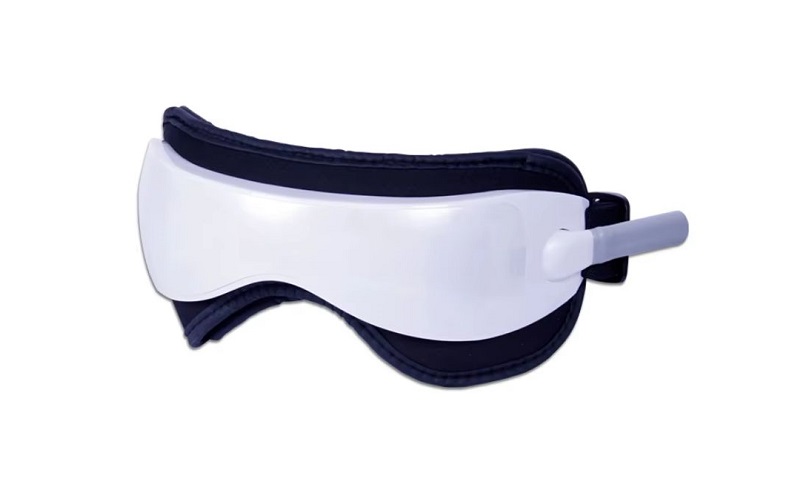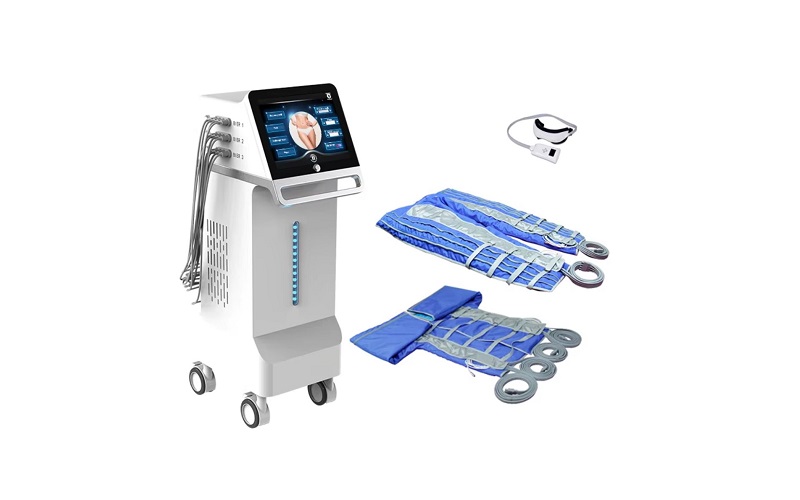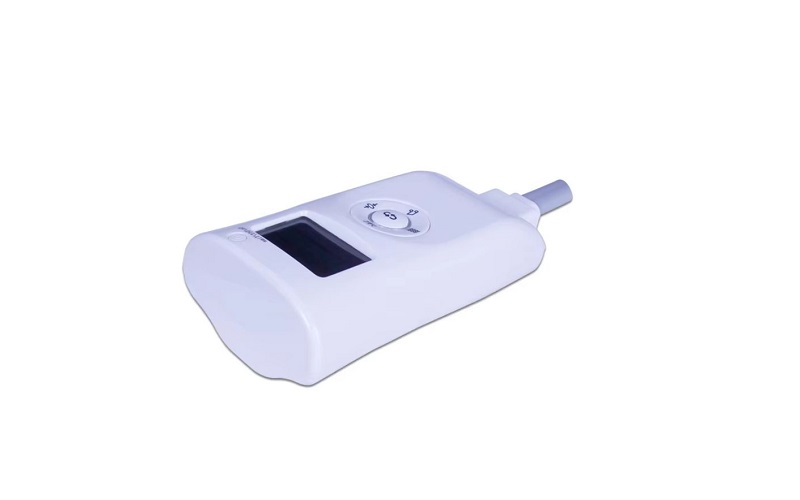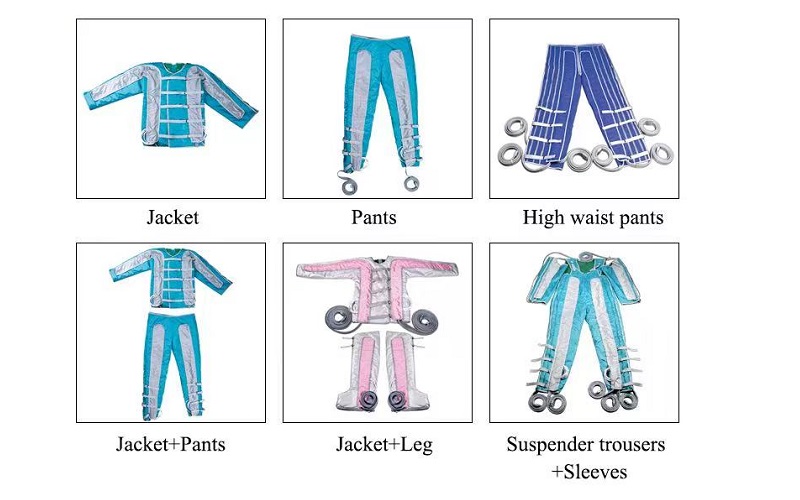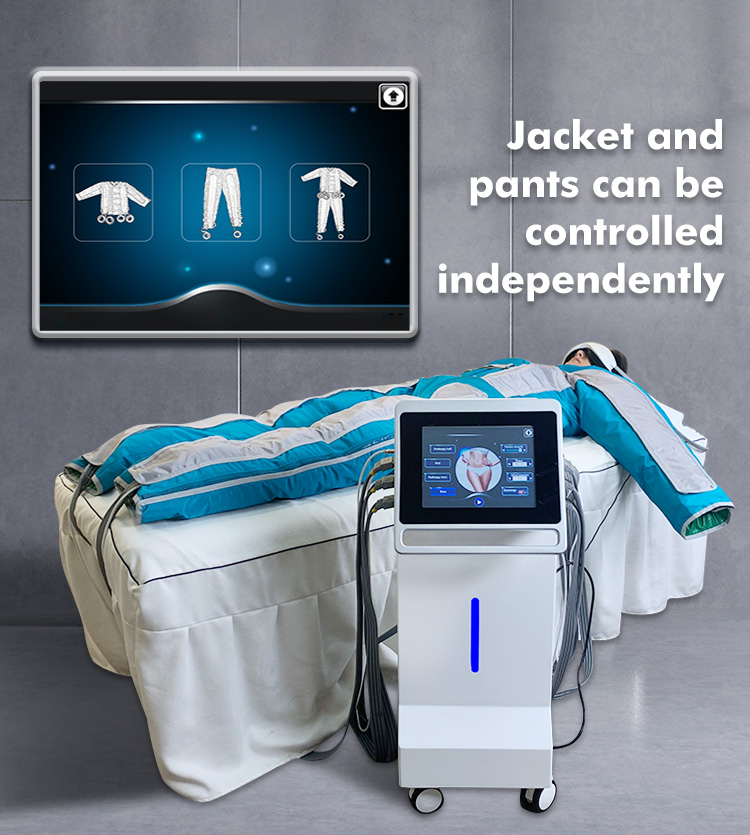

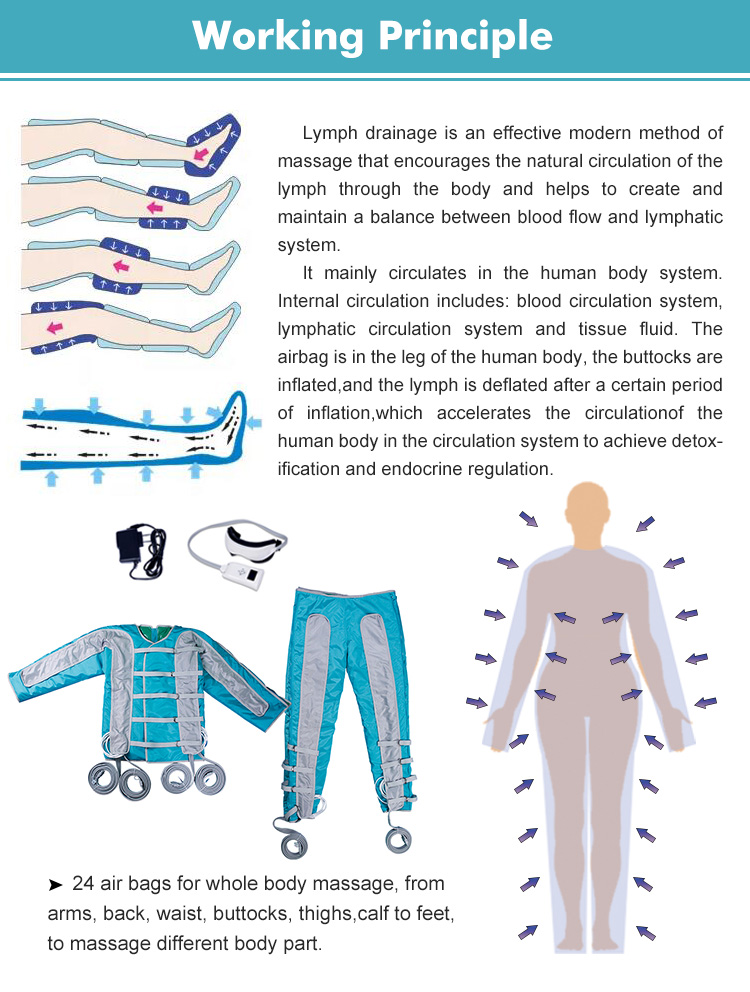
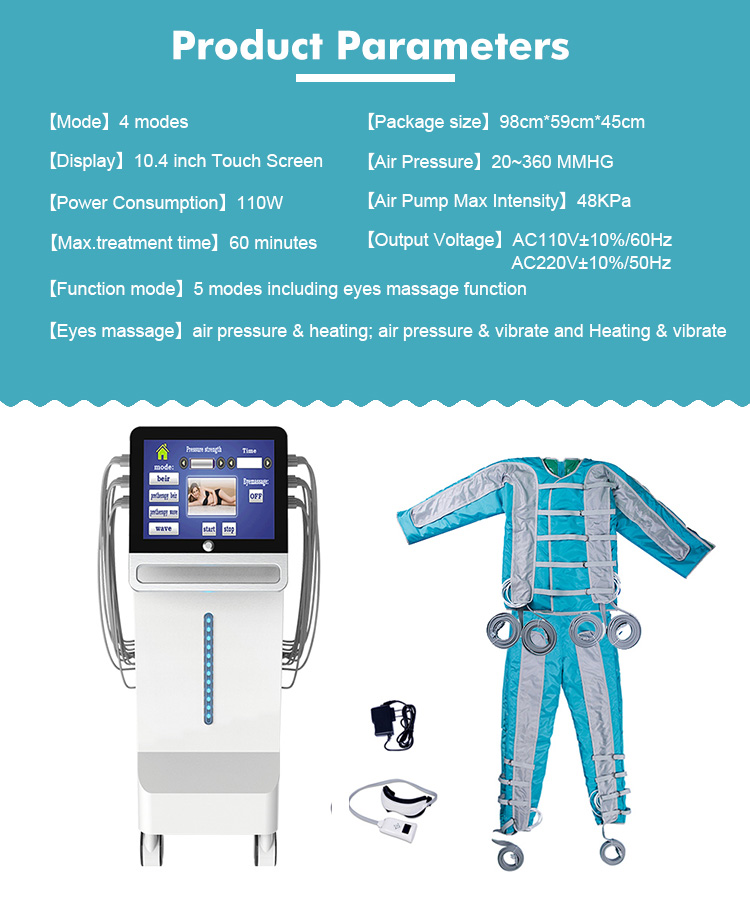
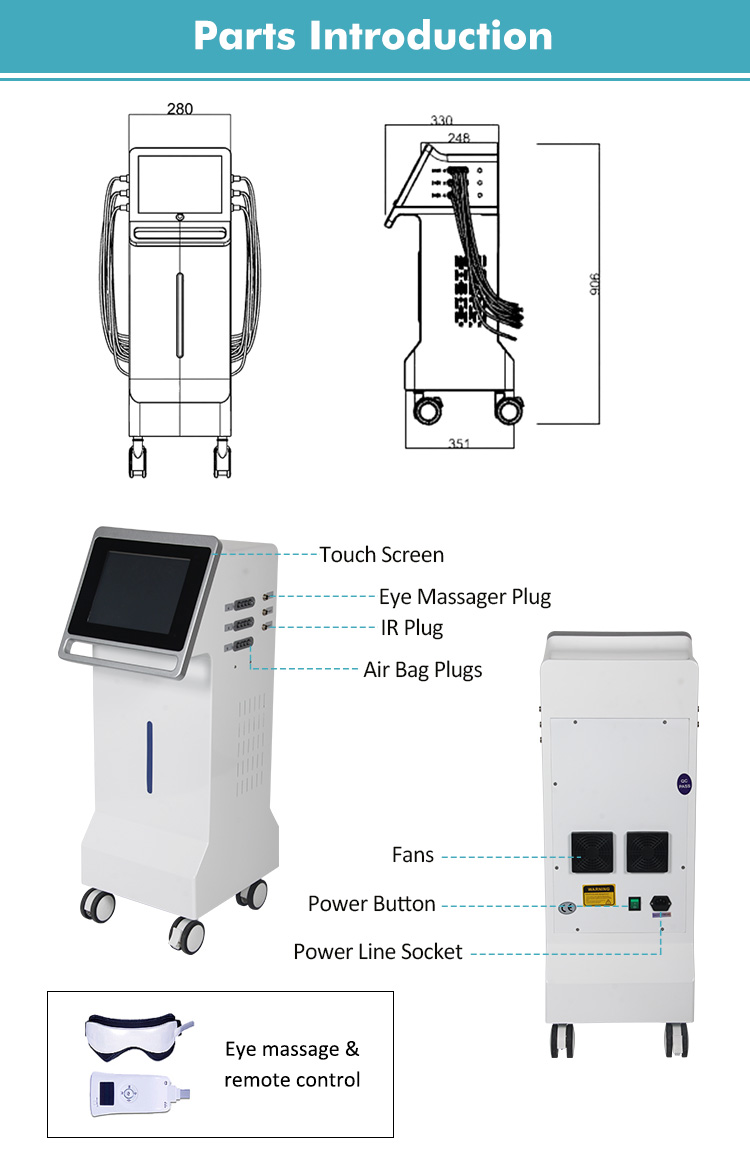
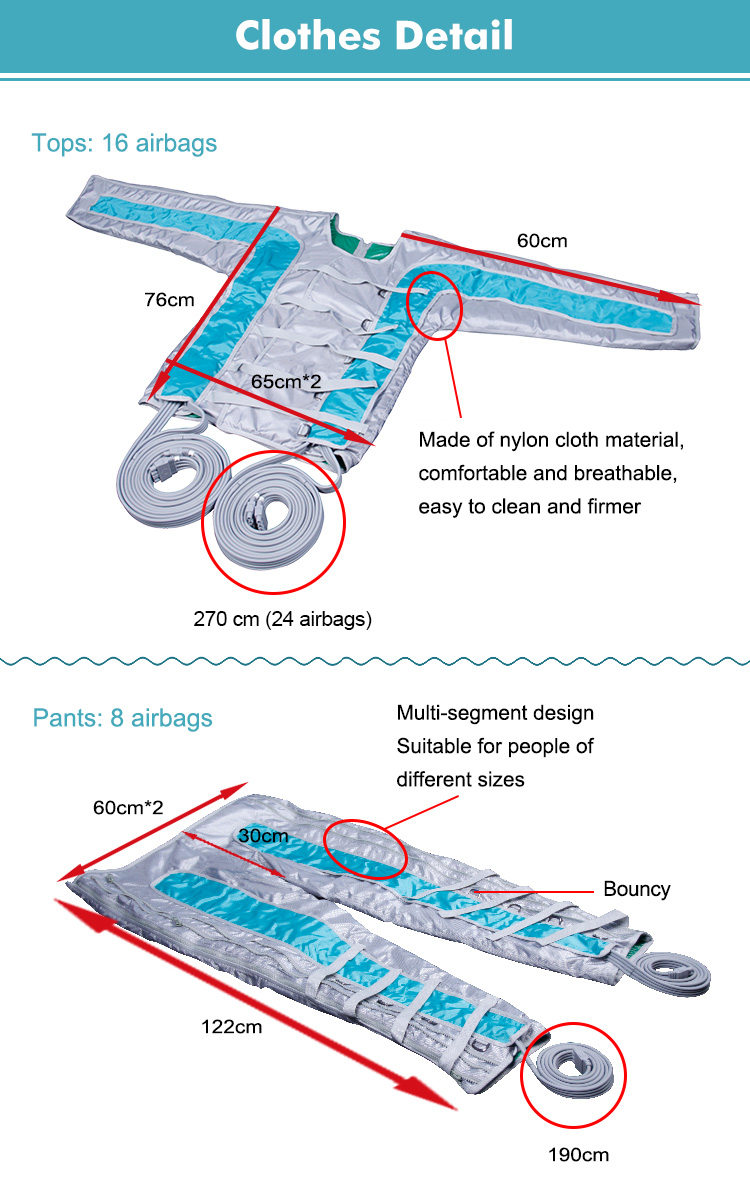
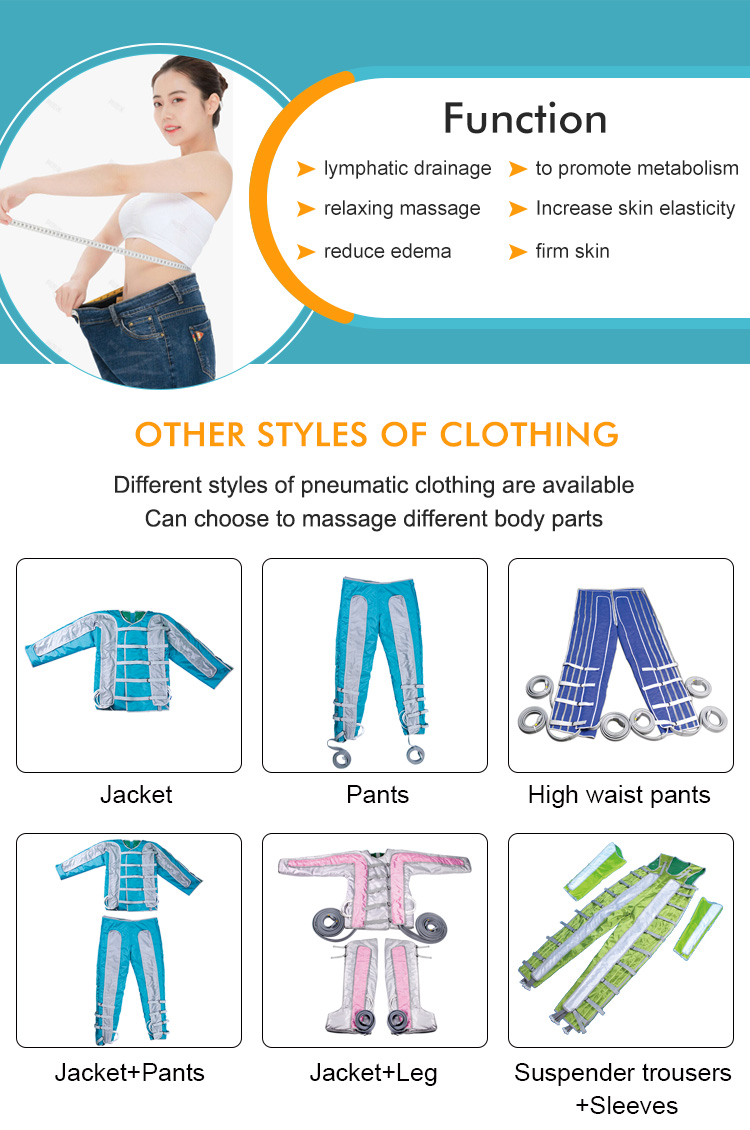
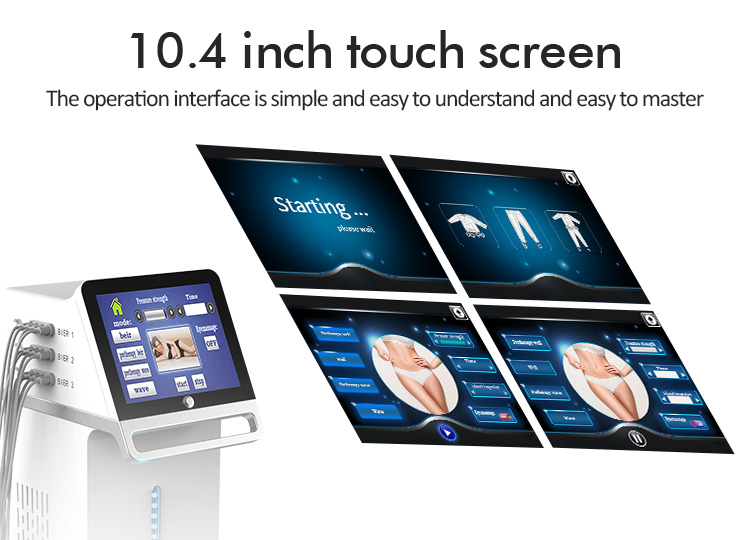
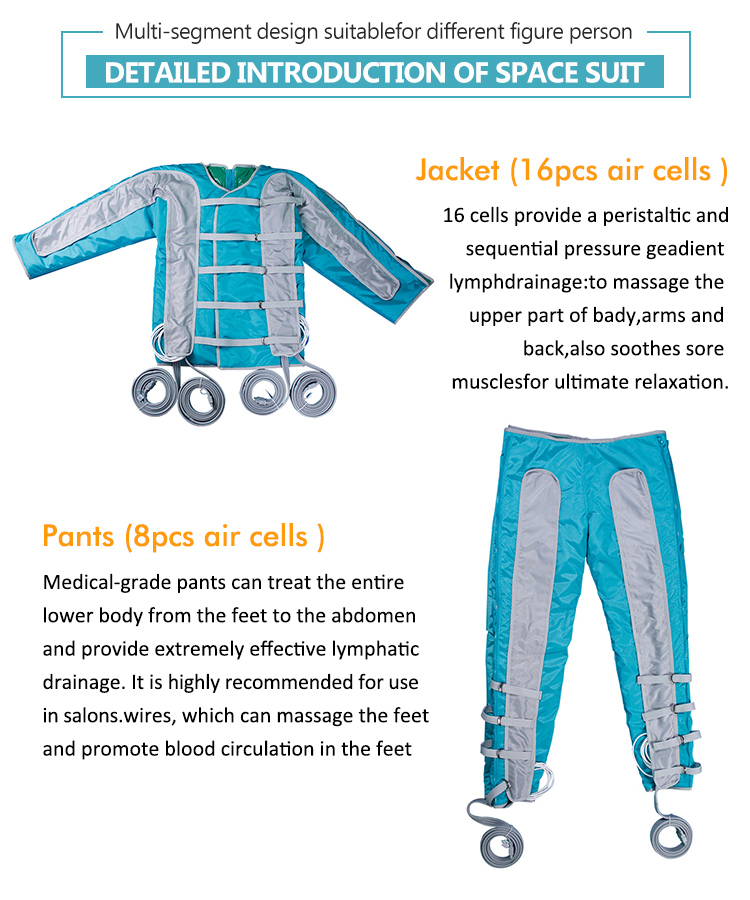
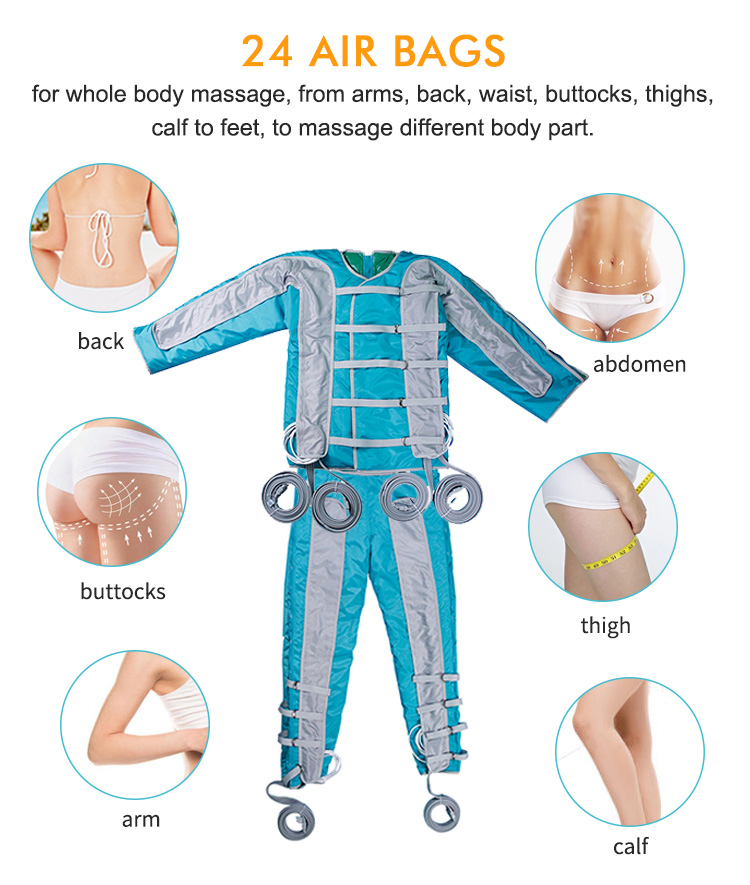
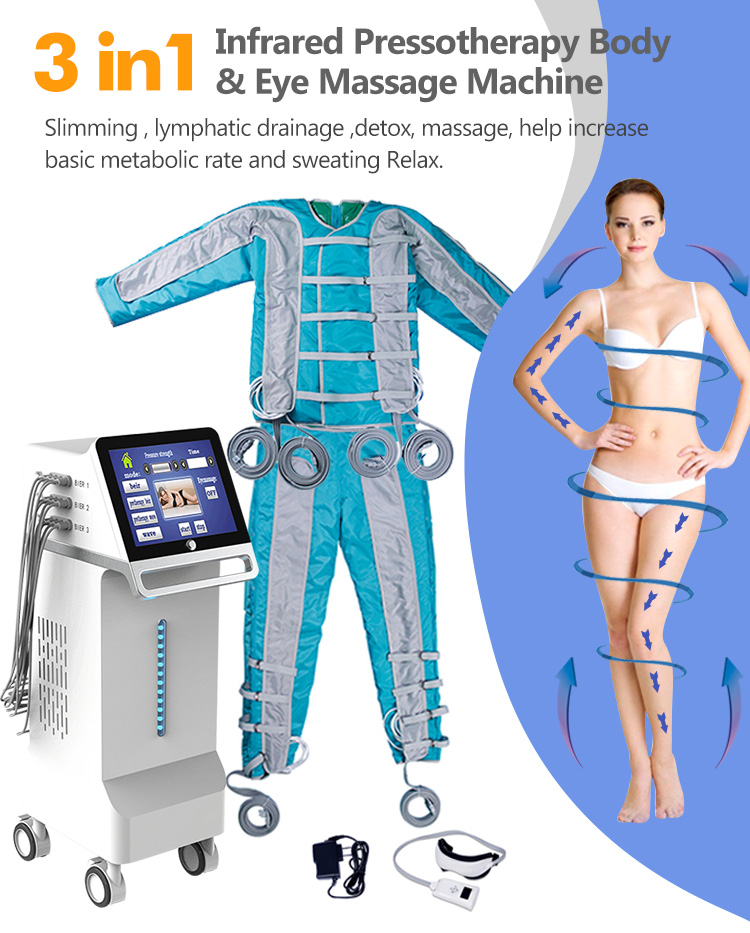
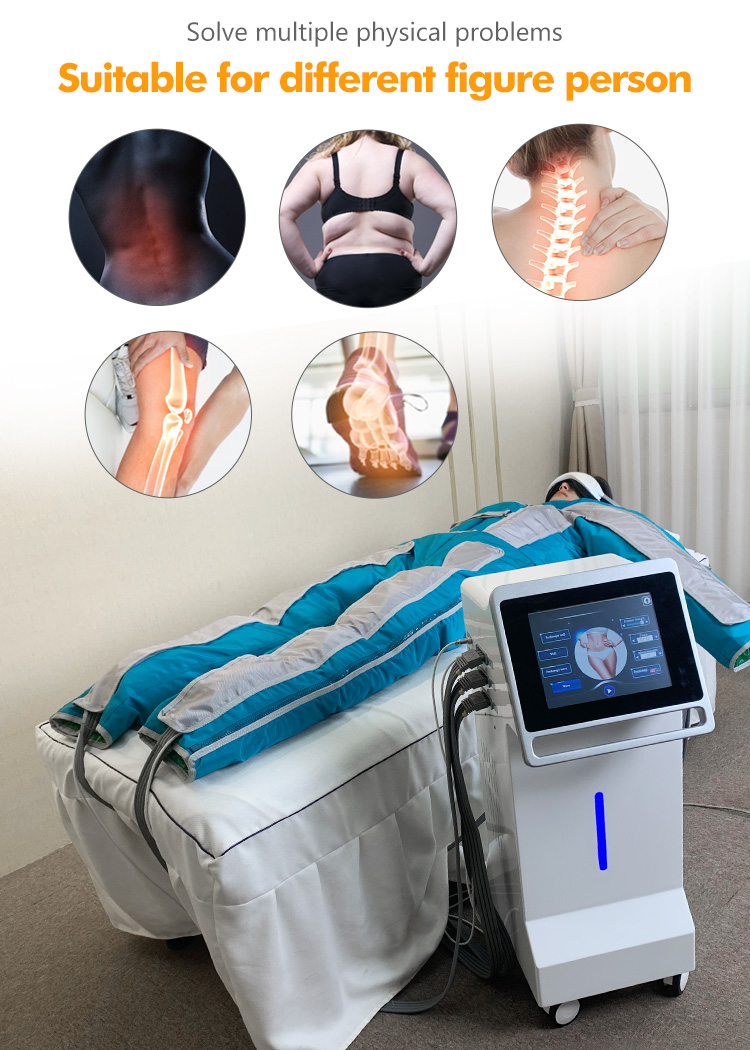
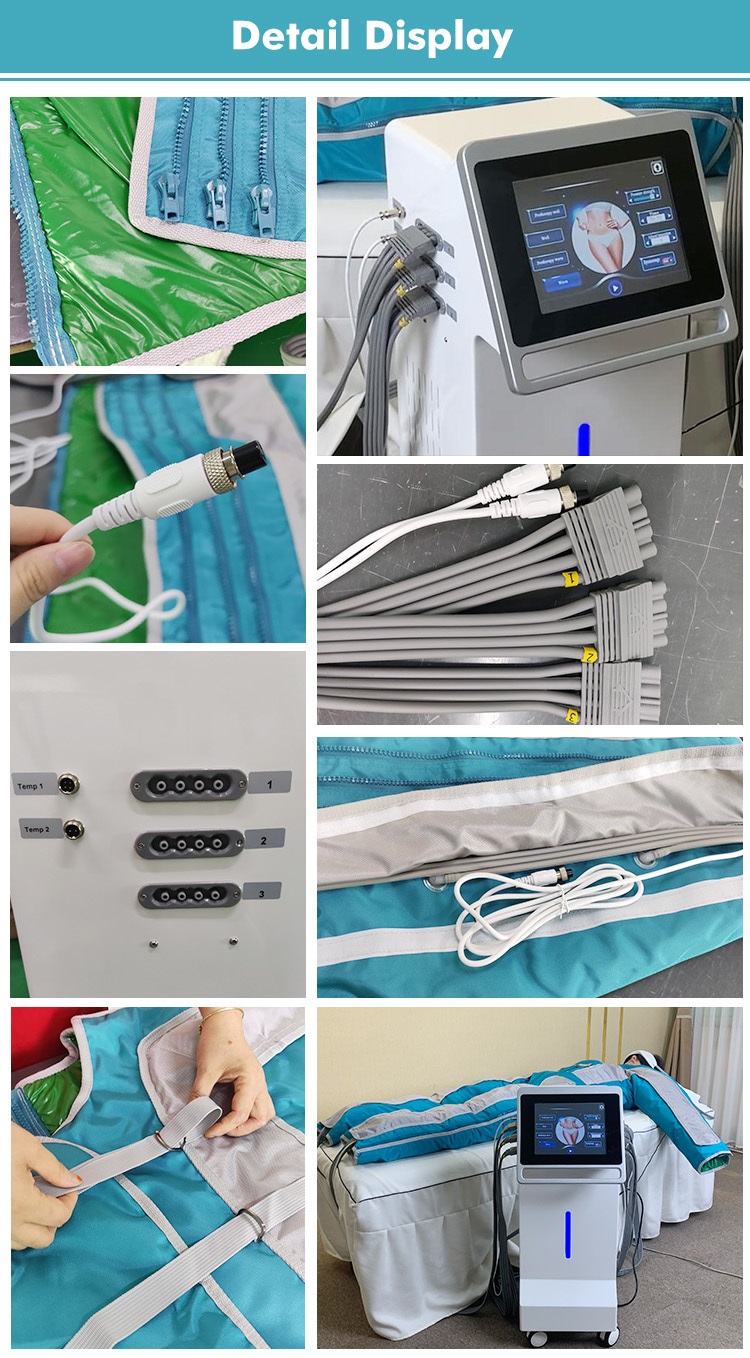
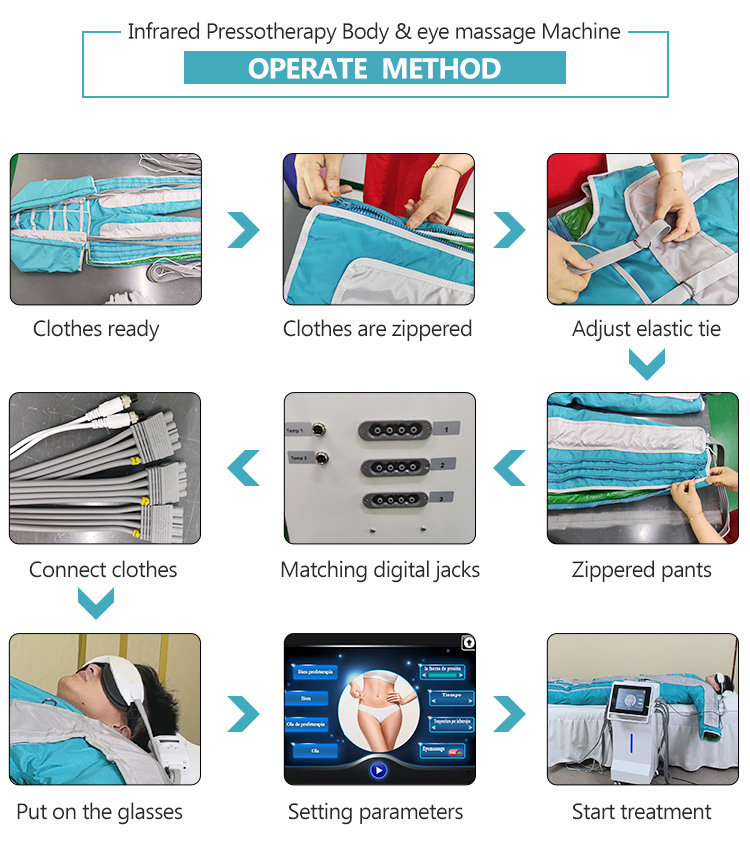
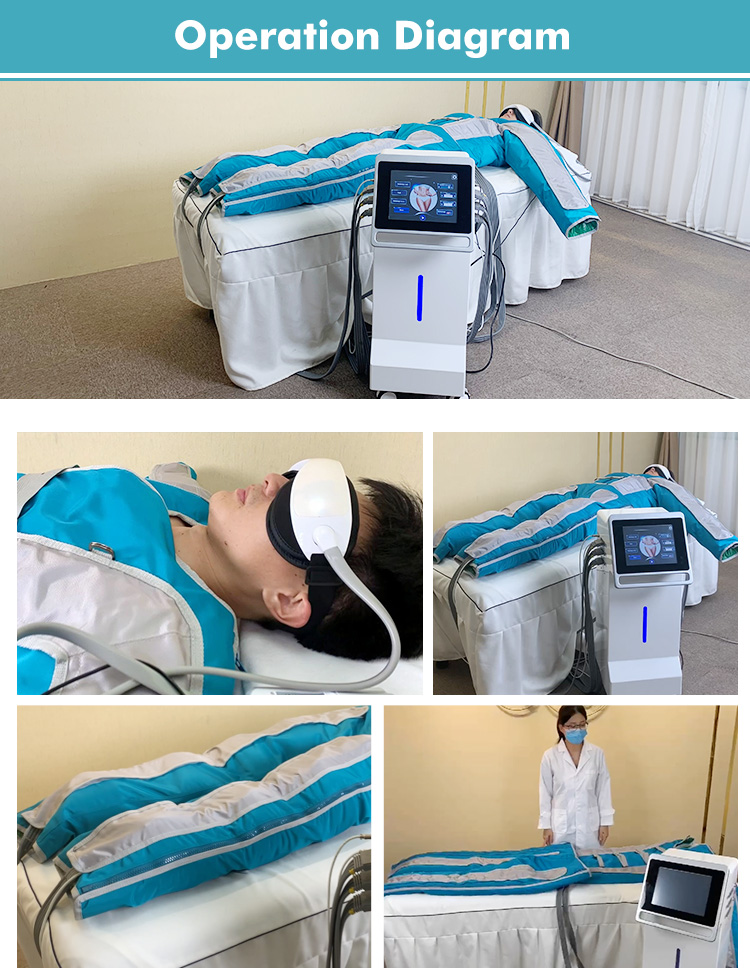
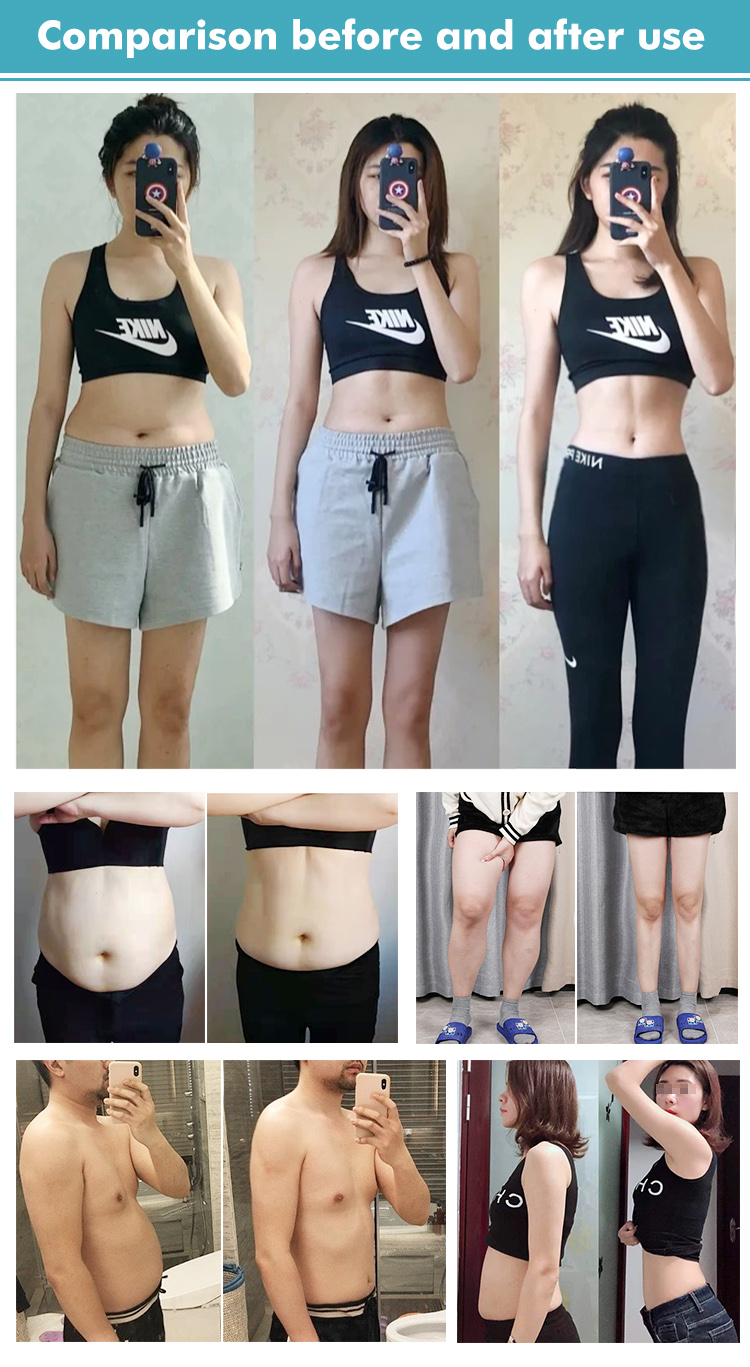
Application
Plastic surgery - pre/post liposuction (edema reduction, recovery)
Aesthetic salons - cellulite treatments, adjunctive treatment for vacuum roller (vacuomobilization) massage.
Spa/home use - cellulite treatments, massage and relaxation.
🌟 stimulates collagen strings in deeper levels of the skin
🌟 increases the lymphatic flow
🌟 supports the metabolism of skin cells
🌟 lowers the effects of cellulite
🌟 reduces the volume of massaged parts
🌟 increases the skin elasticity
🌟 helps to increase the effects of cavitation and RF treatments
🌟 helps to reduce weight if used periodically
Following the principles of lymphatic drainage ("pressotherapy"), it applies a wave of gently pressure to the subdermal tissue, from ankle to abdomen( jacket is form arms to abdomen). The effect is increased lymphatic drainage and venous return.
Contraindications
High blood pressure (hypertension);
Hemorrhage (internal or external);
Menstruation and pregnancy (starting fromс 4th month and in cases of termination risk);
Acute feverish states, higher body temperature;
Renal or liver failure;
Varicose veins on the last stages;
Acute inflammatory process;
Acute and recent thrombosis, thrombophlebitis, deep venous thrombosis;
Cardiovascular collapse (IIb – III class), cardiac edemas;
Vascular, aortic, cardial aneurysm;
Condition after acute myocardial infarction or stroke;
Fractures, dislocations near the area of usage;
Pulmonary edema;
Micro- and macroangiopathy in pancreatic diabetes;
Paresthesia or skin injuries, suppurations;
Malignant tumors benugn tumors prone to growth;
Electronic medical implants;
Undesireability of venous or limphatic outflow increase.
Before treatment
If there are the following conditions exist, don’t recommend to use lymph drainage pressotherapy:
In the presence of any pain or numbness;
Severe arteriosclerosis or other ischemic vascular diseases;
Unbalanced cardiac insufficiency;
Known or suspected deep vein thrombosis or thrombophlebitis;
Gangrene;
Dermatitis;
Untreated or infected wound;
Severe inflammation of the treated limb;
Recent skin grafts.
Compression therapy works by using controlled air pressure to stimulate the body's lymphatic and circulatory systems. Here's a detailed explanation of how it works:
1. Sequential compression:
Air Chambers: Compression therapy equipment has an inflatable garment (such as a sleeve, boot, or belt) that contains multiple air chambers.
Pressure application: The device inflates these chambers sequentially, starting with the distal portion (such as a foot or hand) and moving toward the central portion (such as a thigh or arm). This sequential inflation mimics the natural flow of lymph and blood to the heart.
Decompression: After the chamber is inflated, deflate it in the same sequence. This creates a pumping action that promotes movement of lymph fluid and blood.
2. Functional mechanism:
Lymphatic Drainage: Rhythmic pressure helps open lymphatic vessels, promoting the removal of excess fluid, waste and toxins from the tissues. This reduces swelling (edema) and supports detoxification.
Improves circulation: By enhancing blood flow, compression therapy helps oxygenate tissues, remove metabolic waste products, and improve overall circulatory health. This results in less pain, faster recovery from exercise, and improved tissue health.
Pressure Gradient: Pressure is applied in a gradient, meaning the pressure is stronger at the extremities and decreases toward the center. This gradient is essential to promote effective lymphatic drainage and venous return.
3. Treatment effect:
Reduce Edema: Mechanical pressure helps move stagnant fluid away from swollen areas, which can be beneficial in conditions such as lymphedema or chronic venous insufficiency.
Reduce cellulite: Compression therapy can help reduce the appearance of cellulite by improving circulation and reducing fluid retention.
Detoxification: Enhanced lymphatic flow helps remove toxins and metabolic waste from the body.
Relaxation: Rhythmic pressure can also have a soothing and relaxing effect, reducing muscle tension and stress.
4. Control and customization:
Adjustable pressure: The pressure level and inflation sequence can be adjusted according to the patient's needs to ensure comfort and effectiveness.
Personalized: Different plans can be chosen based on treatment goals, whether they are medical (e.g. reducing swelling) or cosmetic (e.g. reducing cellulite).
5.Safety mechanism:
Pressure Monitoring: Modern pressure therapy equipment includes sensors that monitor pressure to ensure that the pressure remains within a safe range and prevent any harm to the patient.
The effectiveness of compression therapy is largely due to its ability to mechanically mimic and enhance the body's natural circulation and lymphatic function.



